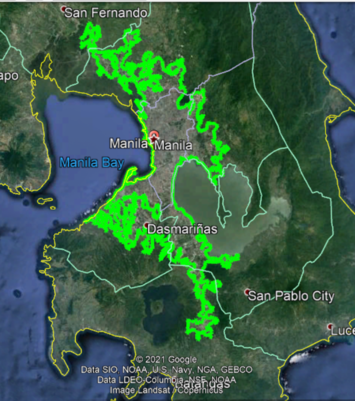
In 2021, the Manila built up urban area is estimated to have a population of 24.0 million, making it the fourth largest urban area in the world, according to Demographia World Urban Areas, covering 873 square kilometers and with a population density of 12,801 per square kilometer (33,135 per square mile). Only Tokyo, Jakarta and Delhi have larger populations. By comparison, the 2021 population of the New York urban area is 20.9 million.
The Greater Manila area continues to grow strongly (Note 1). For the purposes of this article, Greater Manila includes the provinces that share at least a part of the Manila built-up urban area. Greater Manila includes 8 provincial level jurisdictions--- the National Capital Region (NCR), Cavite, Laguna, Batangas, Rizal, Bulacan, Papanga and Angelus Cityand had a 2020 census population of 34.1 million.Greater Manila covers about 13,000 square kilometers, or 5,000 square miles. This is about the same land area as the Miami metropolitan area, which has less than one-fourth the population of Greater Manila.
City of Manila: The core municipality of Manila, in the NCR) has approximately 1.8 million residents and at 43,000 per square kilometer (111,000 per square mile) is one of the densest municipalities in the world. However, outside this crowded core, population densities are far lower.
Greater Manila: In Greater Manila, the 43,000 per square kilometer density of the city of Manila drops off by more than half, to 20,000 in the balance of the National Capital Region (inner suburbs). Then, the population density drops off again in the outer suburbs (balance of the urban area), to 9,000. Outside the Manila urban area the population density is estimated at 1,000 per square kilometer (Figure 1). There is surprisingly a considerable amount of detached and attached ground level single-family housing on small lots throughout Greater Manila, especially in the outer suburbs.
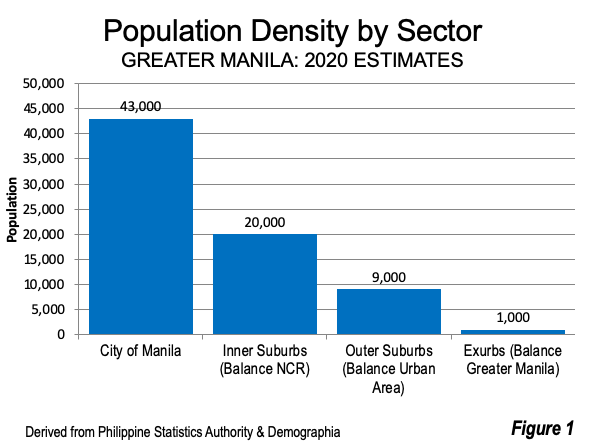
Greater Manila is predominately a suburban city. The core jurisdiction City of Manila now has barely 5.4% of Greater Manila’s population, with nearly 95% living in the suburbs. The balance of Greater Manila’s population is nearly equally split between in the inner suburbs, the outer suburbs, and the exurbs (Figure 2).
As is increasingly the case in the high-income world, the shift has been towards the periphery, particularly to the Outer Suburbs, including Cavite, Laguna, Rizal and Bulacan. Outer suburban growth was 1.9 million, or 63% of the 2015 to 2020 population increase. The inner suburbs (NCR outside the city of Manila) added 0.5 million, or 18% of Greater Manila’s growth. The gain, however, was lower, at 4.9% over five years. The Exurbs, Papanga, Batangas and Angelus City, into which the built-up urban area has recently encroached, accounted for 17% of the Greater Manila growth, also adding 0.5 million for 9.5% of Greater Manila’s growth. The city of Manila accounted for 2% of Greater Manila’s growth and gained 3.7% (Figures 3 & 4).
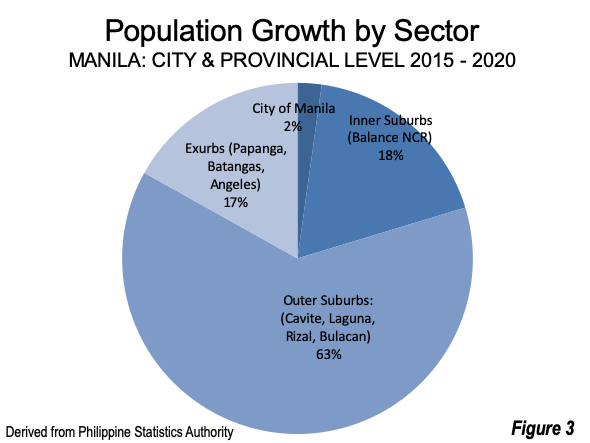
World Edge City Leader? Greater Manila has a number of suburban business centers that are likely to rival any such collection in the world. Referred to as edge cities, such suburban business centers have become a routine feature of metropolitan areas in recent decades and were identified by Joel Garreau in his 1992 book Edge Cities: Life on the Frontier. Sometimes these suburban developments dwarf the former predominant central business districts.
Greater Manila, for example, has a number of high-rise, high-density edge cities that resemble traditional central business districts, with their hyperdense employment densities. This is in contrast with a large percentage of edge cities, especially in the United States and Canada that are horizontal, with far lower employment densities. The largest edge city is the Makati Central Business District, which is the largest in the nation, bigger than the traditional downtown (see photo below). Makati has been called “the Wall Street of the Philippines.” However, the Philippine Stock Exchange moved from Makati to the nearby Bonifacio Global City in 2017 (photo below).
Further, Ortigas Center (photo below) is, according to the Republic of the Philippines Department of Trade and Industry as the second largest center in Manila, leaving the former Manila central business district no higher than third. Photos of other large business centers are shown below.
Having toured 29 of the world’s 36 megacities (urban areas over 10 million population), I have seen nothing to rival the extent of Manila’s dense edge city development. I doubt any of the that any of the seven remaining would equal Manila.
Greater Manila and World Trends
The Philippines is a lower-middle income nation, according to the latest World Bank assessment. Yet, Greater Manila, with nearly one-third of the national population of 109.0 million, replicates the general pattern of urbanization common throughout the rich West, Japan, and South Korea --- namely suburbanization. Like other metropolitan areas, Greater Manila has welcomed millions of migrants from other parts of the nation, as they seek better lives. Inevitably, nearly all settle where they can afford the housing, which is on the urban periphery. Contrary to the popular myth, cities do not get denser as they get larger. In 1950, nearly all of the Manila urban area was in the city of Manila, which had a population density of more than 35,000 per square kilometer, This suggests that even without complete data, the urban area density in 1950 was far higher than today’s 12,800.
This pattern is common globally. The same suburban and decentralizing trend has been evident in the urban development of Paris, Buenos Aires, Jakarta, Delhi and just about everywhere that international boundaries have not interfered. In such places, a steep decline in population density is associated with increasing distance from the urban core.
Note 1: This article is about the metropolitan area (labor and housing market) of Manila. The term “metropolitan” is avoided, however, because of confusion cause by the popular name of the central province, “Metro Manila” (formal name: National Capital Region of NCR). The NCD has only 40% of the Greater Manila population.
Note 2: This urban area population is considerably above the figure reported by United Nations (14.2 million). United Nations figure is for the National Capital Region, which is also referred to as Metro Manila. In fact, the urban area stretches well beyond Metro Manila.
Makati Central Business District, Greater Manila
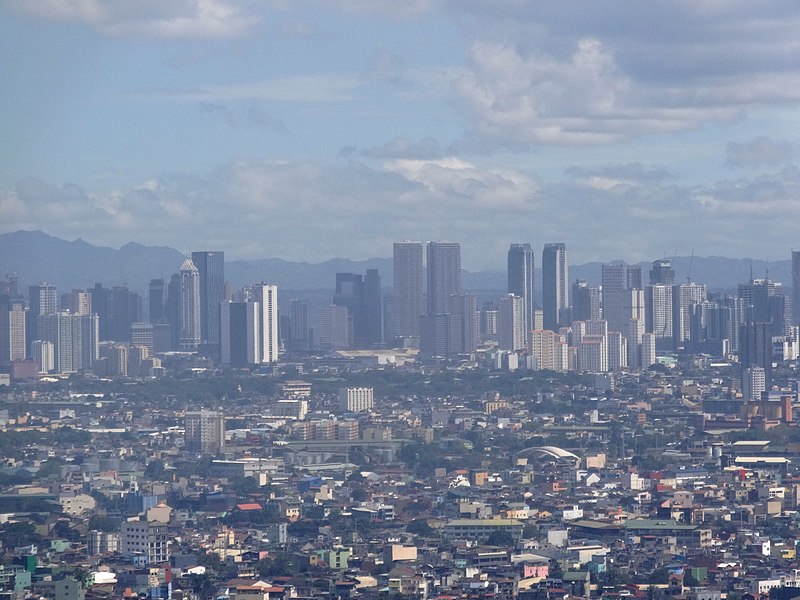
Ortigas Center
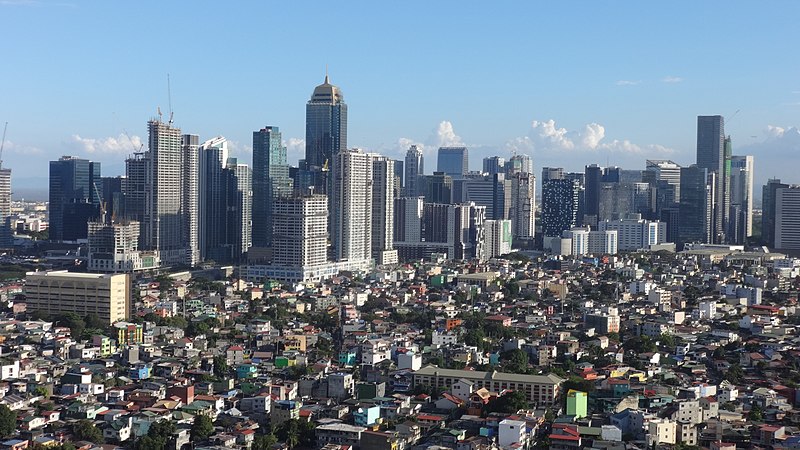
Bonifacio Global City
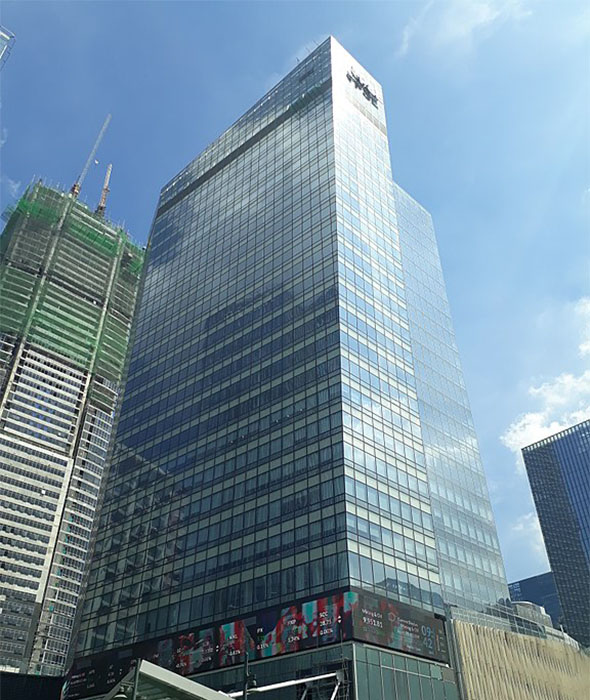
Philippine Stock Exchange, Bonifacio Global City
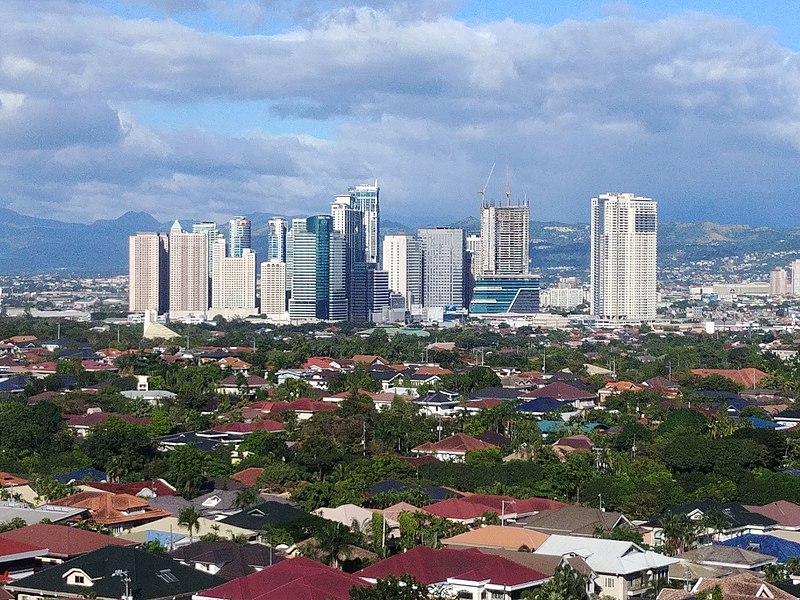
Eastwood City (Quezon City)
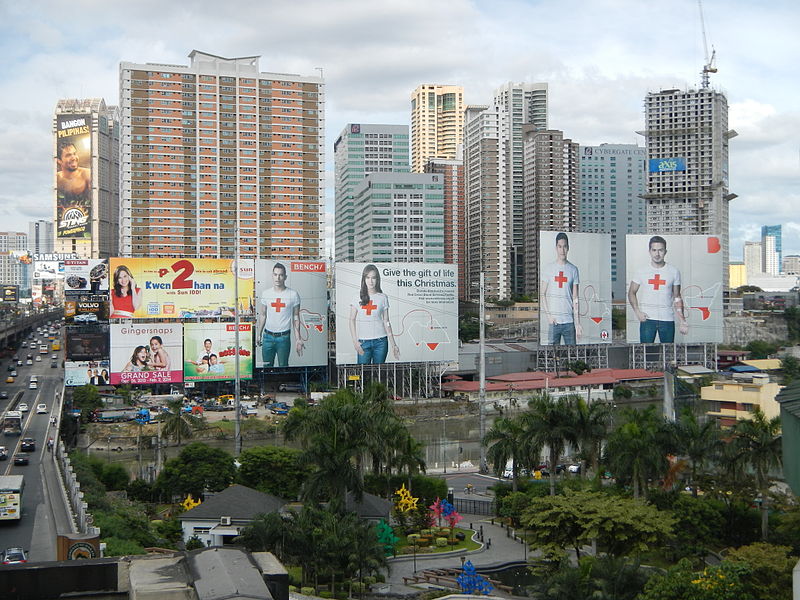
Robinson's Cybergate, CC 3.0 License
Images published here under CC 4.0 License, except as noted above.
Wendell Cox is principal of Demographia, an international public policy firm located in the St. Louis metropolitan area. He is a founding senior fellow at the Urban Reform Institute, Houston, a Senior Fellow with the Frontier Centre for Public Policy in Winnipeg and a member of the Advisory Board of the Center for Demographics and Policy at Chapman University in Orange, California. He has served as a visiting professor at the Conservatoire National des Arts et Metiers in Paris. His principal interests are economics, poverty alleviation, demographics, urban policy and transport. He is co-author of the annual Demographia International Housing Affordability Survey and author of Demographia World Urban Areas.
Mayor Tom Bradley appointed him to three terms on the Los Angeles County Transportation Commission (1977-1985) and Speaker of the House Newt Gingrich appointed him to the Amtrak Reform Council, to complete the unexpired term of New Jersey Governor Christine Todd Whitman (1999-2002). He is author of War on the Dream: How Anti-Sprawl Policy Threatens the Quality of Life and Toward More Prosperous Cities: A Framing Essay on Urban Areas, Transport, Planning and the Dimensions of Sustainability.
Lead image: Manila Built-up Urban Area (Demographia World Urban Areas), drawn on Google Earth.
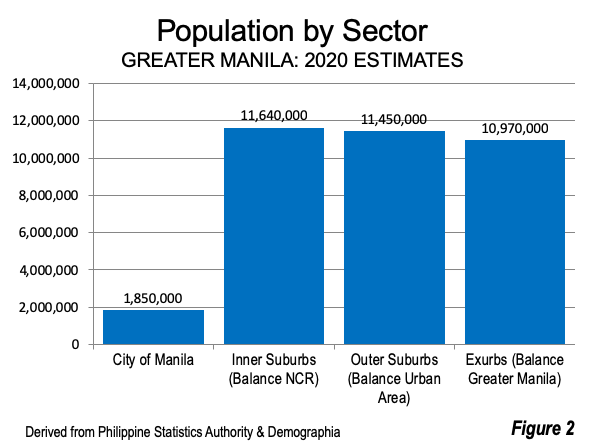
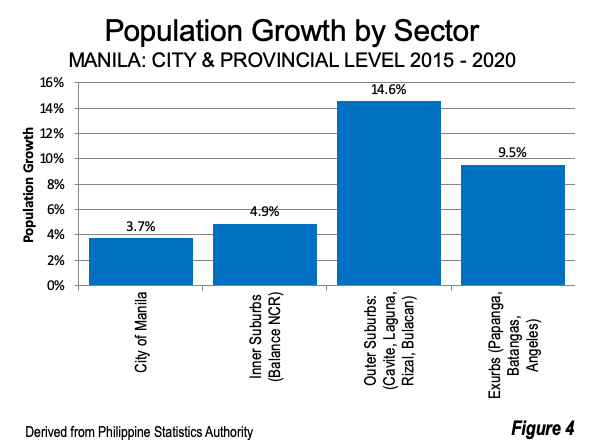
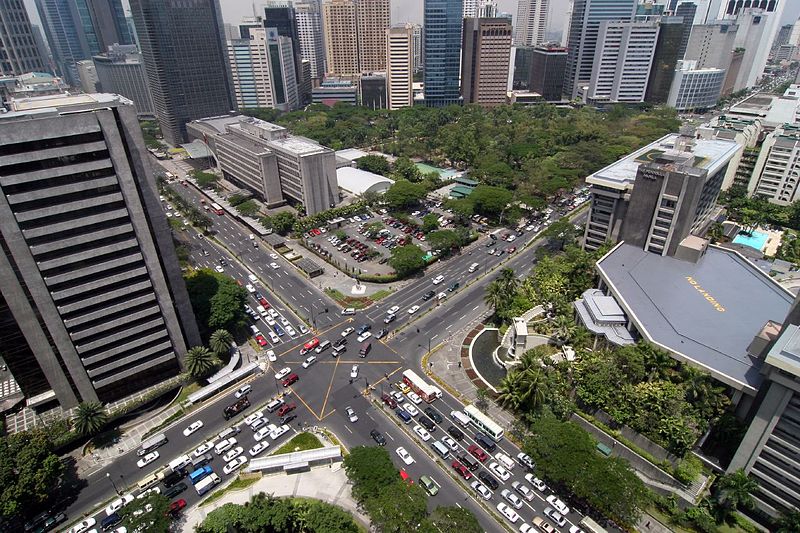













Greater Manila: Shaped by the Jitney and Cars
Clearly suburban Manila (outside the City of Manila, which is the pre-auto core), has been made possible by the car and Jeepney. There is Jeepney service throughout and this gives the metro area a high level of service relative to most metros. Granted, we spoiled westerners would not be attracted to it.
Latest data I can find (and such data is scarce), work trip market share was more than 50% personal vehicle (car or motorcycle). Transit, including Jeepneys, buses, the sparse trains and tricycles (which carry a huge number of people carry about 37% (see: https://en.wikipedia.org/wiki/Motorized_tricycle_(Philippines)). But this was only for the NCR, and excludes the more than 10m residents in the rest of the urban area.
Wendell Cox
Demographia
www.demographia.com
Suburbs & Spelling
I think it's a stretch to call Makati a "suburb". It is, as the author points out, the CBD for the entire Metro. It also stretches credulity to think that places like Pasay, Mandaluyong, San Juan, the nearer parts of Quezon, or even Caloocan are suburban. Those look all very urban to me, despite the fact that they are all separate municipalities (analogous to NYC boroughs).
On the other hand, the author is right about more distant locales. I spent some time in Meycauayan, just across the line in Bulacan--and that place is definitely a suburb. And a pleasant one, too. Less pleasant are suburbs like Dasmarinas in Cavite province.
I think every place served by the LRT (train system) should be considered inner city--and not suburban. One reason for that judgement is that the train system is woefully underbuilt.
Manila is growing in major part because the Philippines still has a fertility rate above replacement. I believe it is the only country in E. Asia so blessed.
There are two words consistently misspelled here. The correct spellings are "Angeles City" and "Pampanga".
I wrote my own impressions of Manila after visiting the place in 2019: https://trotskyschildren.blogspot.com/2019/03/the-philippines.html
transport
Has growth in private auto use made possible this outward pull, or are Jeepneys servicing that population also?